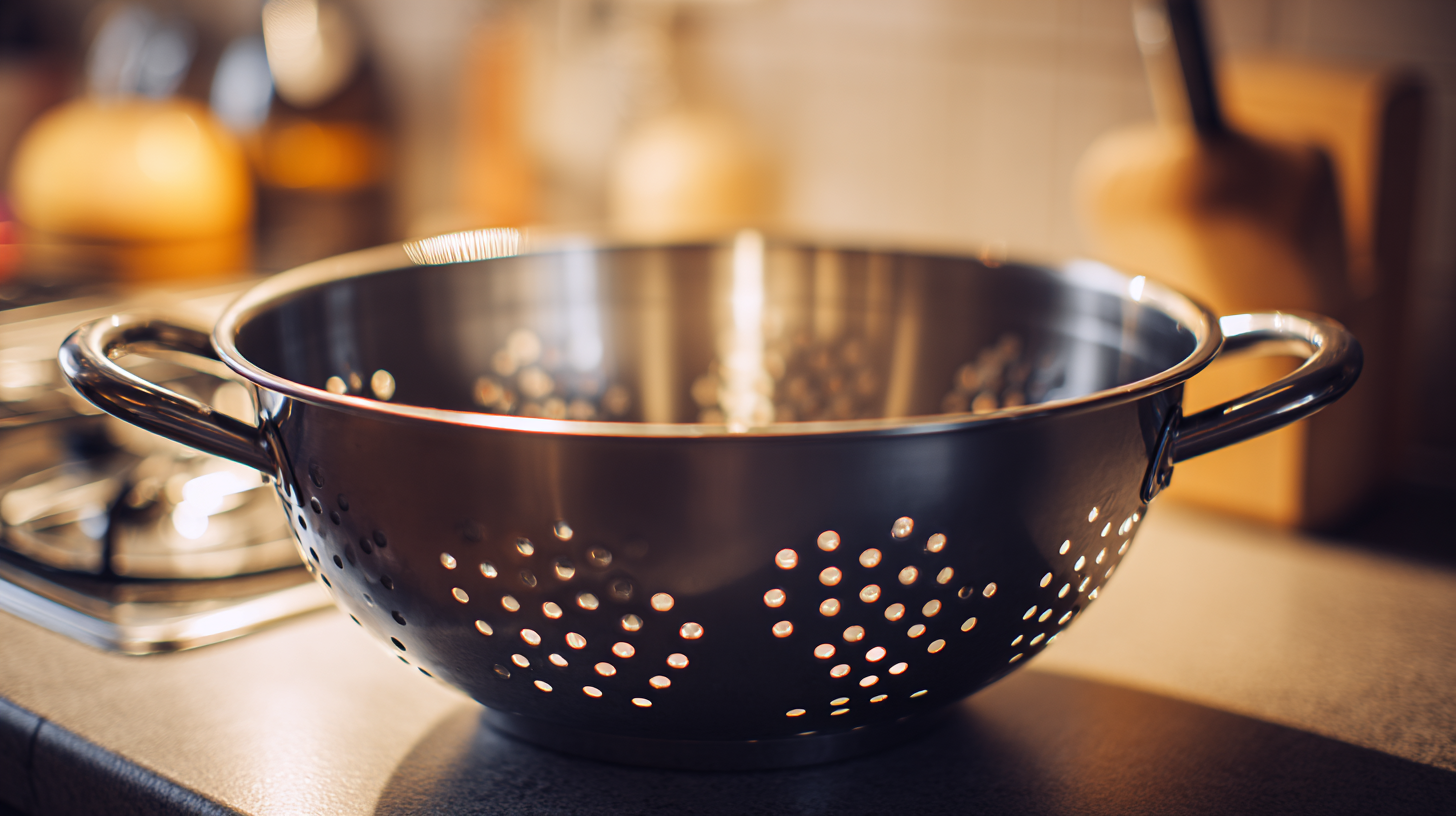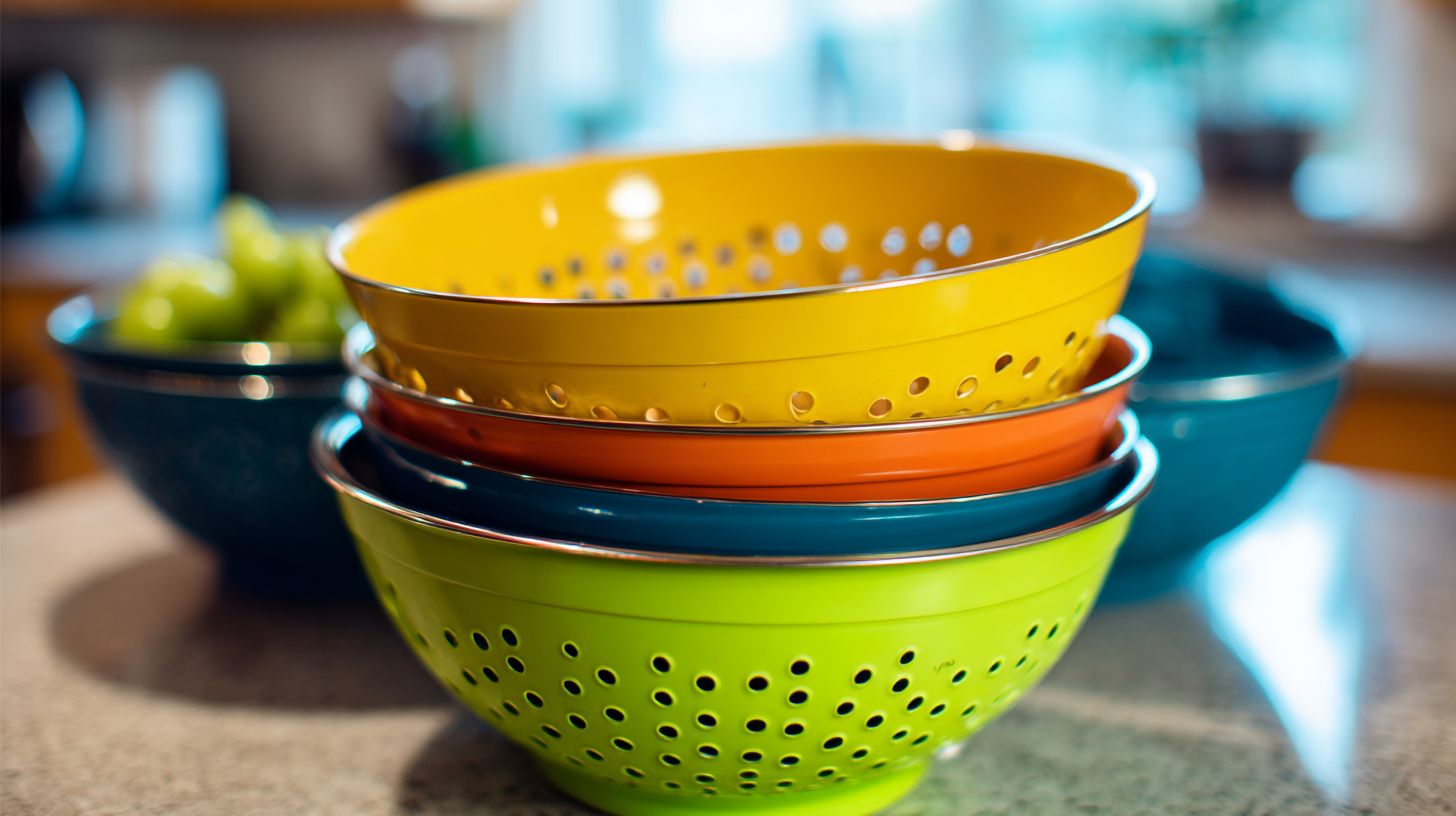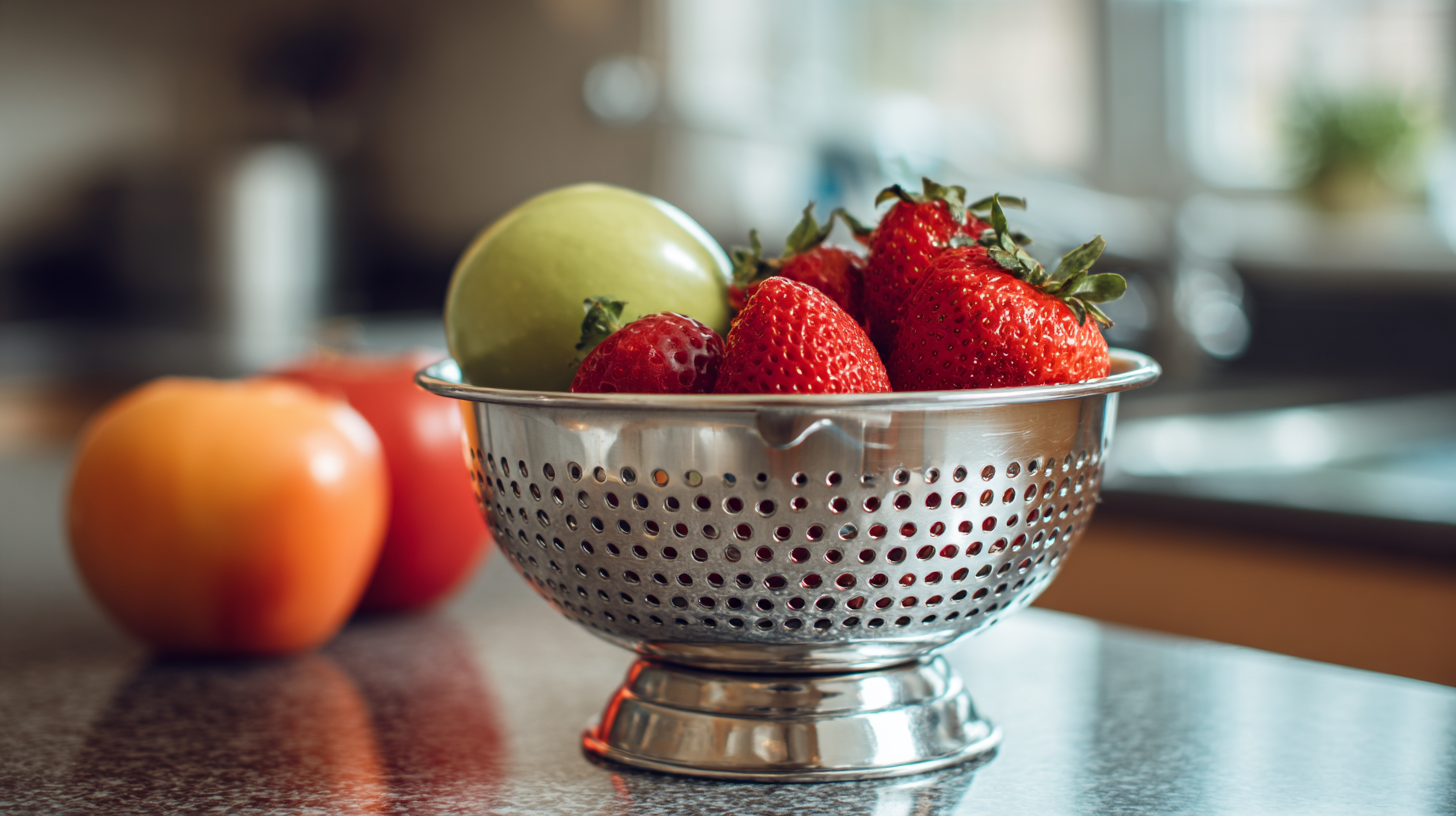Welcome to this website!

In the culinary world, the kitchen colander stands out as an essential tool for both amateur cooks and professional chefs alike. A recent report from the International Kitchenware Association indicates that over 75% of home cooks consider colanders a must-have item in their kitchen arsenal, highlighting their significance in food preparation. Whether you’re rinsing fresh vegetables, draining pasta, or straining stocks, choosing the right kitchen colander can greatly optimize your cooking experience. However, with a plethora of options available on the market, selecting the perfect one can be daunting. This blog aims to provide expert tips that will guide you in making an informed choice, ensuring that your kitchen colander not only meets your culinary needs but also enhances your overall cooking efficiency.

When it comes to choosing the perfect kitchen colander, understanding the different types available is essential for enhancing your cooking experience. Colanders come in various materials and designs, each catering to specific cooking needs. For instance, stainless steel colanders are durable and resistant to rust, making them excellent for draining pasta or washing vegetables. Their sturdy build ensures they can handle heavy loads while maintaining their shape over time.
On the other hand, plastic colanders are lightweight and often come in vibrant colors, making them a popular choice for everyday use. They’re easy to clean and ideal for quick tasks like rinsing berries or draining canned goods. For those who prefer a more versatile option, silicone colanders are worth considering. They are collapsible, which saves storage space, and can be used in the microwave or even for steaming vegetables. Understanding these options allows home cooks to select the perfect colander that not only fits their cooking style but also enhances their overall efficiency in the kitchen.
When selecting the ideal kitchen colander, understanding the key material considerations is essential for ensuring durability and optimal performance. Industry reports indicate that stainless steel, plastic, and silicone are among the most popular materials used in colander manufacturing.
 Stainless steel, known for its durability and resistance to rust, is favored in professional kitchens and by serious home cooks. According to the International Kitchenware Association, nearly 60% of chefs prefer stainless steel colanders due to their longevity and ability to withstand high temperatures.
Stainless steel, known for its durability and resistance to rust, is favored in professional kitchens and by serious home cooks. According to the International Kitchenware Association, nearly 60% of chefs prefer stainless steel colanders due to their longevity and ability to withstand high temperatures.
Plastic colanders, on the other hand, offer lightweight convenience and are often available in a variety of vibrant colors. However, it's important to choose BPA-free options to ensure food safety. A study by the Consumer Product Safety Commission found that poorly made plastic colanders can warp or degrade over time, raising concerns about their performance and lifespan in the kitchen. Finally, silicone colanders provide a unique blend of flexibility and durability, making them an excellent choice for those with limited storage space. Their ability to fold flat while still performing well under pressure has increased their popularity, with sales reportedly rising by 25% in the last year alone.
Each material offers distinct advantages, impacting not just the colander's efficacy but also your overall cooking experience. By considering these material factors, you can make a more informed choice that meets your culinary needs.
When it comes to selecting the perfect kitchen colander, understanding its essential features can significantly enhance your cooking experience. First and foremost, material plays a critical role; stainless steel colanders are favored for their durability and resistance to rust, while plastic options are lightweight and easy to store. According to a recent industry report, approximately 65% of consumers prefer stainless steel for its longevity, indicating a trend towards investing in more reliable kitchen tools.
Another key feature to consider is the size and design of the colander. The right size will depend on your cooking habits, but a study from the Kitchenware Manufacturers Association found that nearly 70% of American households use a colander at least once a week. Opting for a colander with sturdy handles and a non-slip base can enhance usability and safety. Additionally, look for models with perforations that allow for quick drainage while preventing food loss, which is increasingly important for home cooks keen on maximizing efficiency in meal prep.
| Feature | Description | Importance |
|---|---|---|
| Material | Choose stainless steel, plastic, or silicone for durability and ease of cleaning. | High |
| Size | Select a size that fits your cooking needs, from small for single servings to large for family meals. | High |
| Hole Size | Ensure holes are appropriately sized to drain liquids while retaining food items. | Medium |
| Handle Design | Look for ergonomic handles that provide a secure grip. | High |
| Stability | Consider designs with a stable base to prevent tipping. | Medium |
| Heat Resistance | Verify if the material can handle hot liquids without warping. | Medium |
| Dishwasher Safe | Choose colanders that are safe for dishwashers to simplify cleaning. | High |
When selecting the perfect kitchen colander, size and shape are crucial factors that can enhance your cooking experience. A colander that fits well in your kitchen setup allows for easier draining and greater efficiency. For smaller households, a 2-3 quart colander is often sufficient for tasks like rinsing fruits or draining pasta, while larger families may benefit from a 5-quart or more sizable option to handle bigger batches.
Shape plays an essential role too. Traditional round colanders are great for various tasks, but if you're working with larger pots, a rectangular colander can fit better and provide more surface area for draining. Moreover, colanders with wide, sturdy handles can offer better stability while pouring out contents, reducing the risk of spills. Always consider your primary uses—whether it's for washing veggies or draining grains—to ensure you choose the most functional colander for your kitchen needs.

Maintaining and cleaning your kitchen colander properly is essential for ensuring its longevity and optimal performance. According to a study conducted by the American Cleaning Institute, 87% of consumers do not follow best practices when it comes to cleaning kitchen tools, which can lead to bacterial growth and damage over time. To enhance the lifespan of your colander, it’s critical to soak it in warm, soapy water after each use. This helps remove starch and residue that can build up, especially if you’ve been rinsing pasta or leafy greens. Rinsing immediately after use prevents food from hardening onto the surface, making it much easier to clean.
Furthermore, using non-abrasive sponges or brushes is crucial. The data from the Kitchenware Manufacturers Association indicates that nearly 30% of consumers mistakenly use steel wool or harsh scrubbing pads, which can scratch and degrade the finish of their colanders. Instead, opt for soft materials to protect the integrity of your colander. Lastly, ensure that you dry your colander thoroughly before storing it, as moisture can lead to rusting, especially in metal colanders. By following these maintenance tips, you can significantly prolong the life of your colander and keep it looking and performing its best for years to come.
